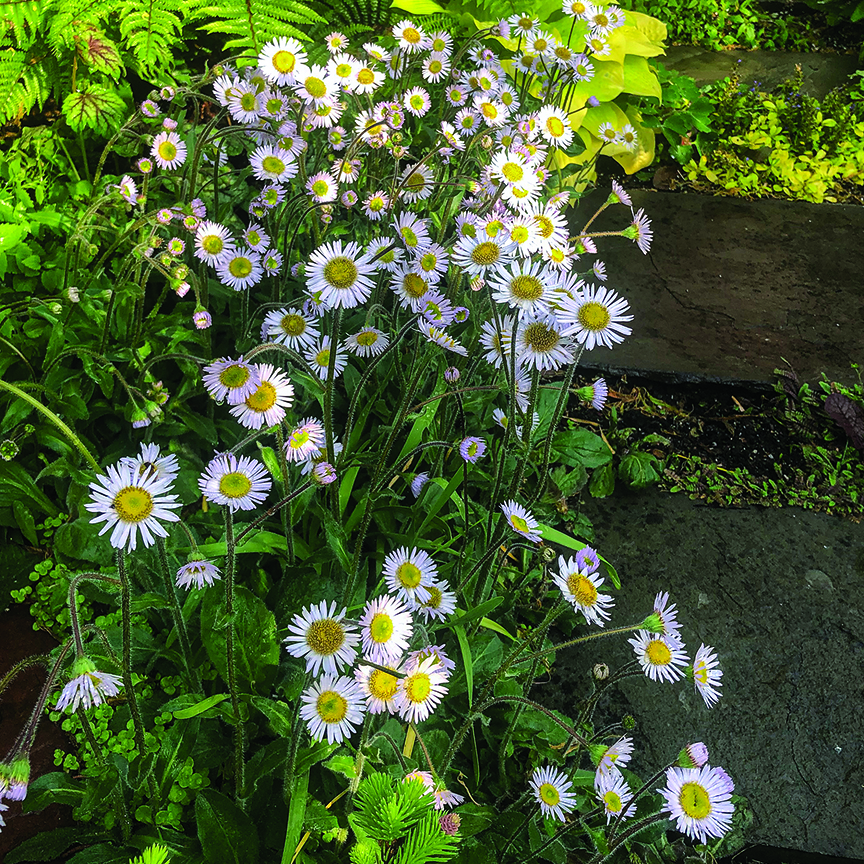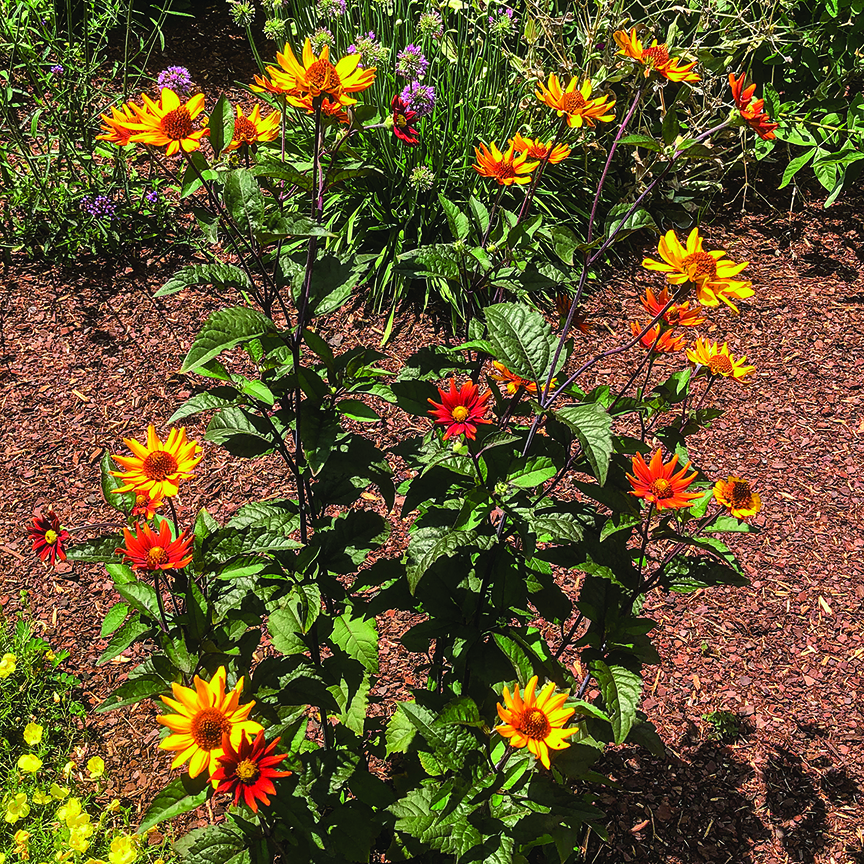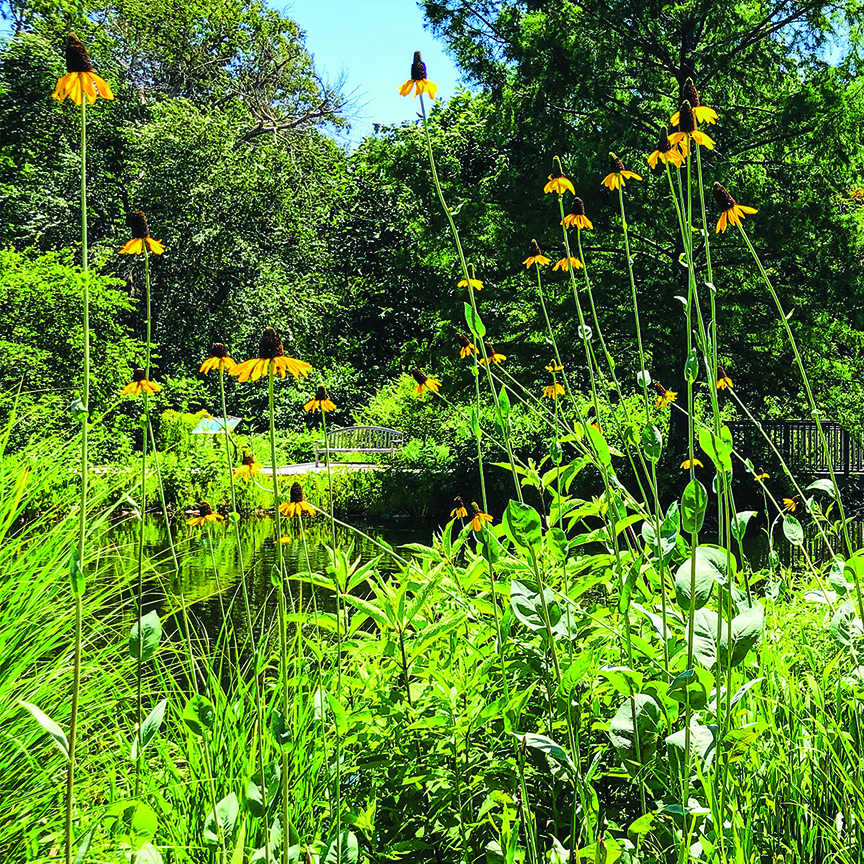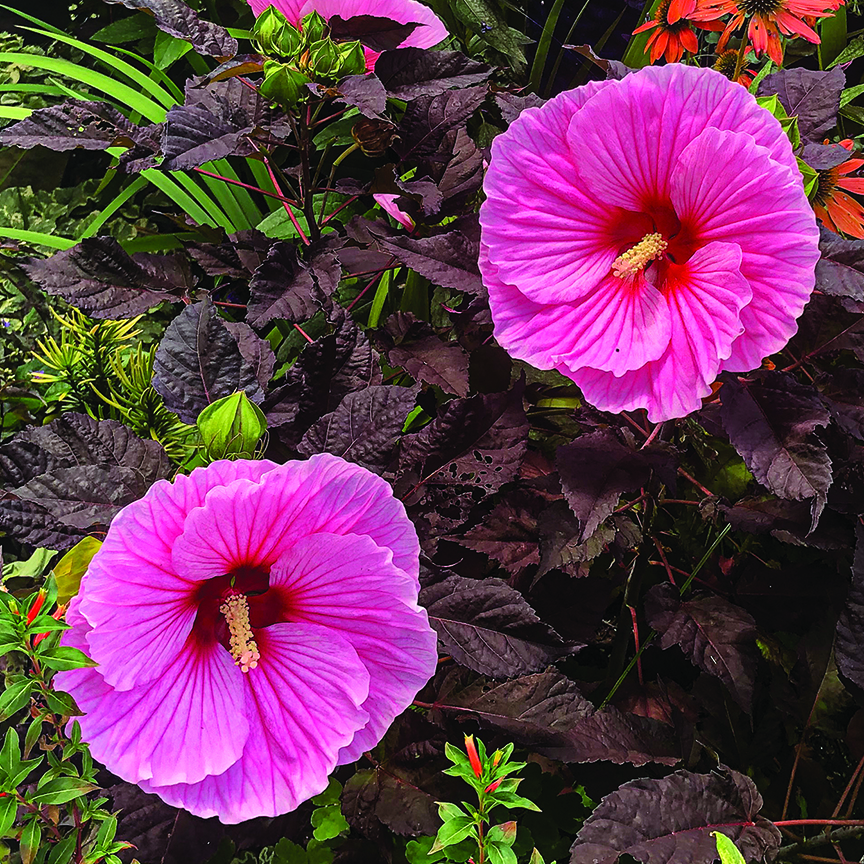Creating the perfect garden
September 2025
by Scott Burrell, Contributing Columnist
What makes great plants so great? Is it long life, low maintenance, colorful foliage or the “wow” factor of its flowers? It could simply be a result of something much more mundane than all of those: the dirt it’s planted in.
In the July issue of Cooperative Living, I waxed rhapsodic in this column about how great soil can ensure that what you see in your mind’s eye will be what you get once you plant something.
Let’s look at a garden plant sampler: proven workhorses all planted in my Piedmont, Va., garden. Each has one or more enduring qualities — low maintenance, long life, multiple seasons of interest, and high impact foliage and/or flowers. I will begin with the short plants for the front border and work my way back to the taller plants that traditionally inhabit the middle to back of the bed.
Colonizing into a tight, weed-free ground hugging mat of semi-evergreen, sculpted foliage rosettes, robin’s plantain (Erigeron pulchellus ‘Meadow Muffin’) is a long-lived, low-maintenance essential for the front of the border and pathway. A “wow” plant, most definitely.
Other low perennial plant prodigies include coral bells (Heuchera), foamflowers (Tiarella) and a cross of the two in the native foamflower cultivar ‘Timbuktu’ — which, beyond great pink-tinged 12-inch blooms, also spreads to form a nice groundcover in part shade.
And then there’s geranium ‘Tiny Monster,’ a 6-inch powerhouse and loosely mounding perennial that blooms through summer with shimmering magenta flowers.
In the middle border (18 to 36 inches), I champion these mid-summer blooming dependables: the coneflower (Echinacea), black-eyed Susan (Rudbeckia), sunflower (Helianthus) and false sunflower (Heliopsis) clans. They all produce daisy-like flowers, have good vigor, diverse height, and foliage and flower qualities that range from petite (under 18 inches) to the monumental (8 feet and higher).
Somewhere near the middle or back of the border (depending on dwarf or full-sized cultivars), you’ll find the peegee hydrangea (Hydrangea paniculata) in my garden. Much more resilient and easier to manage than the “mophead” hydrangea types, I eagerly await the next new cultivar.
Near it, packing saucer-size pink flowers and dark purple foliage, is hibiscus ‘Edge of Night,’ a dependable performer year after year. Cut it to the ground annually in early spring. I love the clematis ‘Avant-Garde’ and its cousin ‘Tie Dye,’ displaying variegated light purple petals that give each flower a one-of-a-kind coloring.
Scott Burrell is a certified horticulturalist who served as the horticulture director for the Virginia Historical Society for nearly 30 years.





